Comparing Versions 8 and 9 of the 2019 Liquid Force NV
A complete review of the 2018 and 2019 Liquid Force NV
In 2010 the Liquid Force Envy led the charge with a bold new three-strut hybrid design. It was faster than the standard bow kites of the time. It bridged the gap between the heavy freeride kites and the fast performance kites. It was something special as it was user-friendly and performance oriented, something hard to find in one kite back then.
In 2019 we have two versions available, the V8 and the V9. The NV led the charge with the hybrid delta movement. Naturally, it’s the perfect kite to lead the charge with some year-to-year comparisons in this series.They're both the NV but there are some notable differences between these kites. We’ve got a lot to cover, so let’s get to it.
An overview of what these two kites are
2019 Liquid Force NV V9
In 2019 the V9 has moved from an all-around kite towards the wakestyle / freestyle direction. It's comparable to kites like the FX or Dice, albeit it has much of its own flavor compared to those kites. It’s become more of a wakestyle or freestyle kite.
It's still user-friendly, yet it has become more niche in design and purpose. This kite does stand out from the other crossover kites as it does have a grunty low end and it's somewhat of an easy-to-use, pull-and-go kite for being a performance model.
2018 Liquid Force NV V8
The V8 was an all-around kite that flew differently from all the other freeride kites. Light bar pressure, fast turns and all-around performance was the recipe.
It was unique as it flew off the front lines, making for the lightest bar pressure I've ever felt. I was always surprised not to hear more hype about it as it actually fit what many kiteboarders are looking for. That fast, light, playful three-strut freeride kite that all the brands now produce. I guess the NV was a bit before its time in that regard.
Let’s start with the first thing I noticed on the water when comparing the kites.
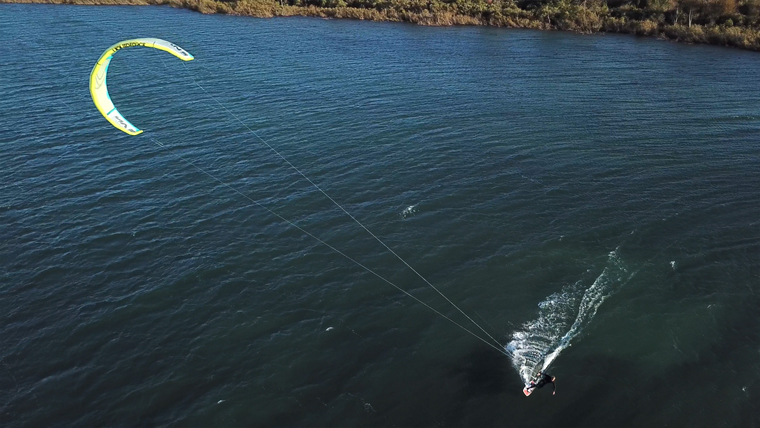
Turning Speed, Radius and Bar Pressure
NV Version 8
I spent about half of my 2018 riding season with a quiver of the V8 NV to get familiar with the kite. In that time I started to appreciate the fast turning speed and tighter arc of the V8. It was fun to fly and it became my choice wave kite last season from my personal quiver here.
I realize it's not a wave specialty kite, but it was always in my car and it worked well for my conditions, meaning smaller wind waves that can lack push. Fast turns and light bar pressure made it responsive and aggressive. I fell in love with downlooping it in the waves to chase good sections or to transition.
On freeride and freestyle days, it was fun, fast and useful when incorporating loops. It wasn’t my favorite kite for unhooked freestyle at first, but after a couple sessions I got used to it. For hooked-in jumps it was exciting and fast.
It does take a little timing with the NV to get good air, but not much. With the light bar pressure, you want to make sure you can feel the lines loading before you send it. Sometimes I'll speak with a rider who recently crossed over to the NV and they only know how to use pull-and-go kites. The NV V8 isn't a difficult kite to ride. The jumps do take a fraction of thought in contrast to freeride kites with moderate bar pressure.
NV Version 9
The difference in turning radius stood out right away. It had a wider, more arcing turn than the V8. Don’t confuse this with a slower response. The timing is different but the kite is more direct and as responsive as the V8. It takes a wider, smother, more consistent arc in the turn.
The NV V9 had more feedback and flies less from the front lines. It now feels like a freestyle kite. The jumping was a little easier but not too different when it came to technique. More so, the even bar pressure makes timing more brainless. It feels more consistent. This is due to the wider arcing turn when you send the kite.
I didn’t have to steer it as aggressively as the V8 to get the same power. It's an interesting design and it does stand out from the other crossover freestyle kites. Most of those require aggressive flying while the V9 does not. The V9 stands out as the most user-friendly of the freestyle kites. It's a lot like the new RPM in that regard, albeit that kite has gone more freeride.
Final thoughts on the turning radius.
The takeaway here is the V8 will be faster, with a tighter turning radius. The V9 has a wider arc with a progressive power band. While it’s as responsive as the V8, it turns a little slower. Not in response to steering input, but more due to the wider arc. The turn will start as soon as you do, but it does take a wider arc to complete the turn, true to what Liquid Force is marketing. The power is more consistent and progressive throughout the turns.
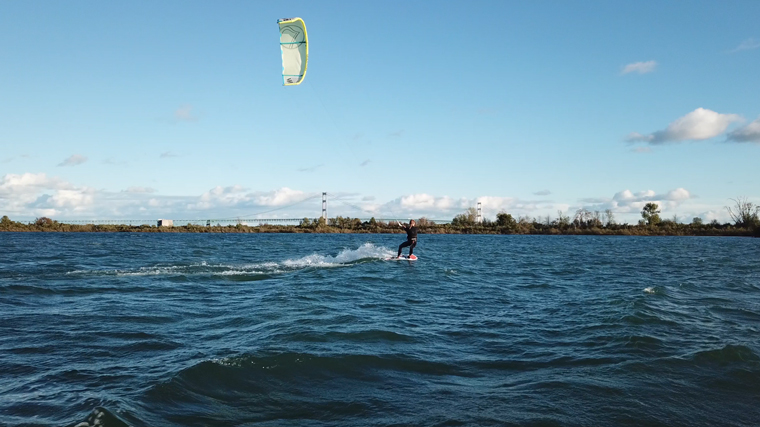
Bar Pressure & Feel
NV Version 8
In my time spent teaching on and riding the V8, the bar pressure was always something that stood out. The V8 has the lightest bar pressure of any kite I’ve ever tested. This trait is always appreciated by my female students. It’s so light that when I first got my quiver, I would launch the kite and immediately question if I even had any power- at least until I got on the water.
Sometimes bar pressure can be deceptive like that. It can create the illusion of power. This is a common misconception with high bar pressure kites. Many are more effective on the low end, but a large part of it is that they feel like they have power.
The NV V8 is a kite that likes to be flown on the high end, meaning it’s not a grunty kite. In moderate to high winds it performs like one would hope and expect from the three-strut design. It’s fast, responsive and fun. With ample power, you have a better sense of where the kite is and it reacts consistently.
On the low end, like all three-strut kites, you'll need to work the kite a bit. It might feel like there is no power due to the lack of bar pressure. Now, if you pay attention, you'll notice there is still tension in the front lines and you have ample power.
With this understanding, the NV V8 is an awesome tool, albeit sometimes misunderstood. Once I started paying attention to my front line pressure I was able to ride the V8 to its full potential. I always thought it was funny that our team rider Blake Olsen considered this a big air kite until I noticed this. Now I see what he means.
NV Version 9
A couple weeks later, I was able to test these two kites with Blake on our last shoot for his Jump with Style playlist. In regular flat water or choppy conditions, the V9 was stable and consistent. When it came to sent jumps, the wider turning arc and new shape gave the kite more grunt and bar pressure.
The feedback and stability from the kite are perfect for unhooked riding. It's also much appreciated in the chop. Liquid Force has mentioned there is less chatter in the bar. I did notice this immediately in the gusty conditions. This is due to the progressive turn and increase in bar pressure.
The V9 has more bar pressure and low end. I would still classify it as light to moderate. The most notable difference is the bar pressure gives a more readable feel for your power.
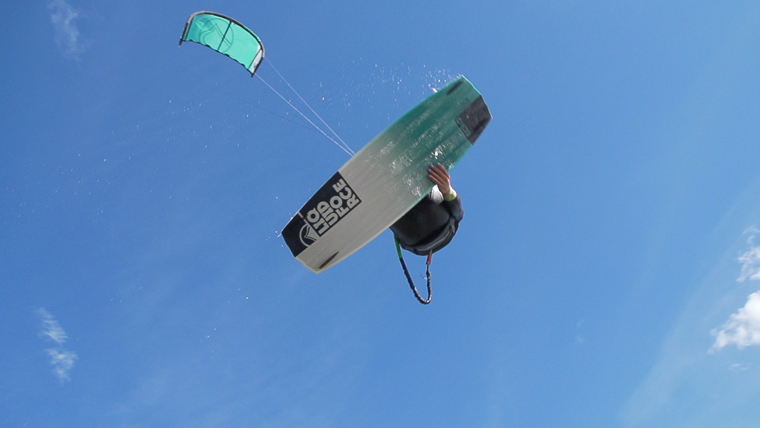
Wind Range
In regards to the actual wind range. I checked the charts released by Liquid Force and these kites have the same wind range. I’ll include those charts in the written blog. That said, as I mentioned, sometimes bar pressure can create the illusion of low-end power. No doubt, this is the case for the V9. As I mentioned on the V8, sometimes I thought I didn’t have power until I actually got on the water. Only then did I notice the front line pressure and started riding upwind. When I first tested the V9 I thought it had a touch more low end. That was due to the illusion created from the steering line feedback.
Remember, this is subjective as well. I’ve spoken with kiteboarders who only knew the NV. When they tested a moderate to light bar pressure kite they found it to be heavy. I’ve also read reviews calling the NV V8 a ball of power. If you ride a moderate to heavy bar pressure kite, you might tend to disagree.Granted, now that I understand the front line pressure it makes more sense.
When it comes to performance it’s always best to compare the wind charts. Avoid using the bar pressure as a basis for comparison.An insider tip here: the charts are usually based on a rider who is about 165 pounds and experienced. If you’re new, you can shrink that by a couple of knots on the top and bottom end. If you're lighter or heavier, shift it by a knot or so per every 10 pounds difference.
I’ve read some reviews that claim the V9 has a somewhat reduced wind range. This was not my experience on the water; it was as effective as the V8.
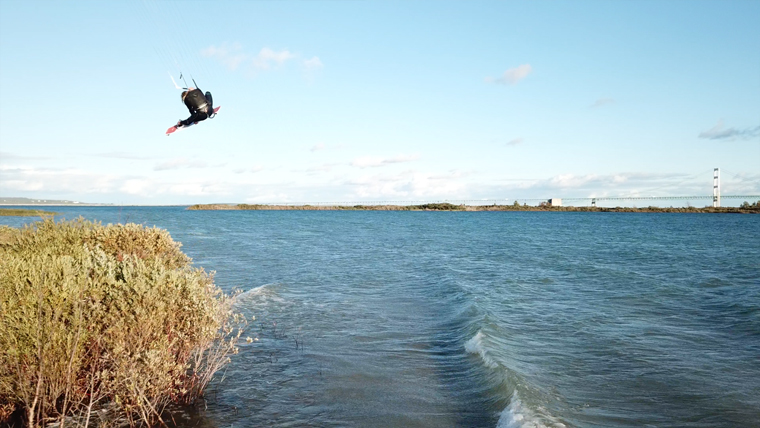
Jumping
This is another interesting point. A couple months back, Blake Olsen and I were putting this to the test. With the new changes, the V8 actually seems to jump higher and had more hang time. The V9 jumps easier and smoother, but due to the new wakestyle design it’s not as lofty. Again, this comes back to the front line pressure.
NV Version 8
The V8 is more of an all-around kite, so the shape lends itself to more hangtime. The jumps are fast and aggressive and you'll want to pay attention to the front and steering lines. When you load the edge of the board and send the kite, you'll feel your lines load up. Time the pop right and the V8 does get huge air.
NV Version 9
The V9 is similar as it jumps like a freestyle kite. It was more familiar to me with more feedback in the steering lines. The kite is not as lofty, but it is a smoother pop and a powerful jump. You will descend faster on the V9. This makes sense as it's now a freestyle kite.
When it comes to kiteloops, I spoke with Blake who is a looping machine. The V9 is much better and more powerful. The V8 is fast but not as effective.
If you like to do unhooked kiteloops or incorporate kiteloops and downloops, the V9 is great. The consistent feel and smooth power delivery make looping fun and effective. The V8 had less power and felt less intense. It would be a good kite to learn to kite loop on.
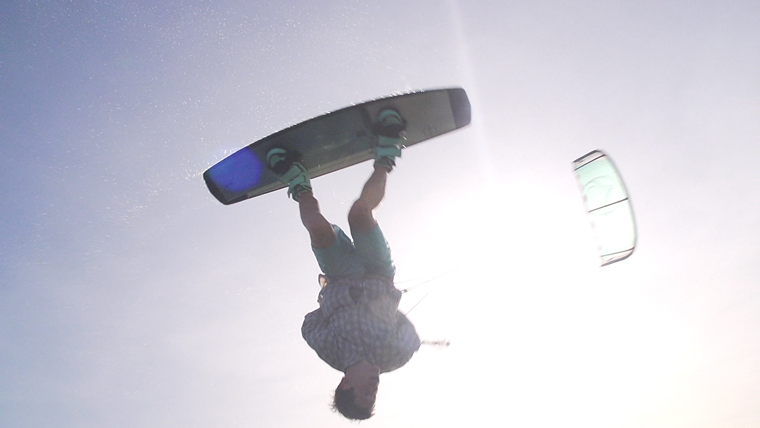
Unhooked
This is an area where you will notice a big difference between the two kites. The V9 has gone the direction of the crossover freestyle kites. The consistent, direct-feeling bar pressure is perfect for freestyle. You can feel more confident knowing where your kite is and what it's doing.
I did notice a big difference in the unhooked load and pop. The V9 is less spongy. I’m not referring to sent jumps. It has better pop and slack and is a great choice if unhooked riding is on your list. Of course, you can unhook on the V8, but it’s much better on the V9. The V8 is a jack-of-all-trades; the V9 is more specialized.
I'll be doing more content on the V9 NV in the future. While this is a comparison of the V8 vs. the V9, I'll have to test the V9 back-to-back with some freestyle kites. I will say I enjoyed this aspect of the kite and there is something different and good about it. I can't put my finger on it, but we'll figure that out in a future video.
Relaunch
There is a difference, but it's small. A new rider would find the V8 easier due to the shape. The square wingtips make the V9 more difficult. Any experienced rider will have no issues. When speaking with Blake, he felt the same way. He has no issues on the V9, but the V8 was easier.
In Summary
The NV has undergone a redesign and become more specialized. The V9 caters to intermediate or advanced riders and kiteboarders looking to push their personal freestyle and wakestyle boundaries.
It's an excellent wakestyle kite and we’re happy with the changes.
The V8 is one of the fastest, lightest-feeling all-around kites available. It’s great for people who hate bar pressure, who want a fast kite. Kiteboarders who like to do a bit of everything from hooked-in tricks, to waves, to wakestyle. With Liquid Force introducing the P1 as their specialized freeride kite, the V8 will be the last generation you can get this unique all-around version of the NV.
Hopefully, this video will give you some clarity on the differences between the V8 & V9.
 Ryan (Rygo) Goloversic
Ryan (Rygo) Goloversic
Just a dude from a kite shop testing all the gear one session at a time.
Many people dream of quitting their job, traveling the world and pursuing their passions. Rygo is one of those people who pulled the trigger. A few years into a postal career, he decided to change everything and travel as a kiteboarder, freelance videographer & writer. His mission is to help people and share the stoke. Get out there and kite!
Producer of: Ride with Blake I Sessions I Versus I Destinations I Foil Fridays
Recent Posts
-
Kiteboarding | Crafting the Harlem Force Kite with Sustainability and Performance
Unparalleled Performance Meets Unmatched Sustainability The kiteboarding industry is on …24th Apr 2024 -
Duotone Ventis 2025 | What's New?
If you're familiar with Duotone's Ventis, you know its specialty is freeriding in light wind …23rd Apr 2024 -
Duotone Ventis D/LAB 2025 Overview
If you ride in an area with multiple light wind days and need a wing that'll let you get o …23rd Apr 2024




